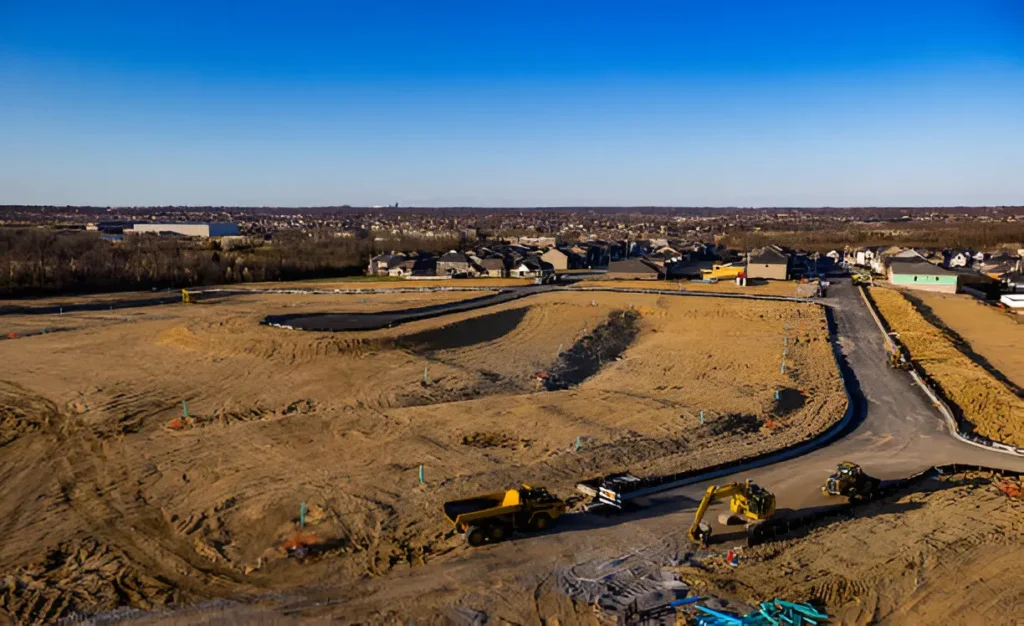Before the first brick is laid or foundation is poured, housing developers must address one of the most crucial—yet often underestimated—phases of any residential project: land preparation. Properly preparing land ensures smoother construction, fewer delays, and a finished community that stands the test of time. Whether you’re developing a handful of homes or an entire neighborhood, understanding pre-construction priorities can save time, money, and headaches.
1. Site Assessment and Feasibility Studies
The first step in any land preparation process is a thorough site assessment. This includes evaluating topography, soil conditions, drainage patterns, and access to infrastructure. Geotechnical studies are essential to determine the land’s load-bearing capacity, identify potential hazards (like sinkholes or flood zones), and confirm that it meets zoning and environmental regulations.
Feasibility studies go hand-in-hand with assessments, providing insight into whether the land can support your desired development type. Factors like lot size, density restrictions, and municipal codes are critical in shaping your building plans.
2. Zoning and Permitting
Before any machinery touches the soil, developers must ensure the land is zoned appropriately for residential use. Rezoning may be necessary in some cases, especially for mixed-use or multi-family developments.
This stage also involves acquiring essential permits, which may include:
- Building permits
- Grading and drainage permits
- Environmental clearance
- Utility approvals
- Road access permissions
These processes can be time-consuming and vary by jurisdiction, so early coordination with local authorities is key to staying on schedule.
3. Clearing and Grading
Once the paperwork is in order, physical site work begins with clearing the land. This includes removing trees, brush, rocks, and any existing structures or debris. Special care must be taken to protect conservation areas or heritage features, if applicable.
After clearing, grading begins. Proper grading ensures the land has the right slope for construction, directs water away from structures, and prepares lots for roads, sidewalks, and utilities. A well-graded site not only reduces flooding risks but also lays the groundwork for a stable foundation.
4. Soil Stabilization and Compaction
After grading, the soil may need to be stabilized, especially in areas with loose, sandy, or clay-heavy soils. Techniques like lime or cement stabilization, geotextile fabric installation, or adding compacted fill may be used to ensure a solid base for roads and buildings.
Compaction is crucial. Without it, homes could suffer from settling or foundational shifts later on. Soil testing should be done post-compaction to confirm it meets engineering standards.
5. Utility Infrastructure Installation
Before residential construction can begin in West Valley City, excavation must take place to prepare the site for essential utility installations. This includes laying water lines, sewer systems, stormwater drainage, electrical conduits, gas lines, and telecommunications infrastructure. Strategic excavation and planning at this stage ensure that utilities are installed in a logical, efficient manner—helping to prevent costly adjustments down the road.
Close coordination among excavation crews, utility providers, civil engineers, and project managers is vital. Any delays or miscommunications during this phase can significantly impact the project timeline and budget.
6. Access Roads and Traffic Considerations
Next, developers should address road access and transportation logistics. Temporary access roads may be needed for construction vehicles, while permanent roads, sidewalks, and driveways must be designed to local code. This stage may also involve building retention ponds or other stormwater features required for drainage compliance.
Traffic studies may be required to evaluate the impact of your development on local infrastructure. Early consideration of these issues helps reduce public pushback and streamlines the approval process.
7. Environmental and Erosion Control
Modern development must consider environmental impacts. Developers may need to implement erosion control measures, such as silt fences, sediment basins, and vegetation buffers, to prevent runoff from polluting nearby water sources.
Sustainable practices—like preserving existing trees or using permeable paving—can also improve long-term property value and gain favor with environmentally conscious buyers and regulators.
8. Final Inspections and Pre-Construction Sign-Off
Before construction can officially begin, developers must pass final inspections from local governing bodies. These inspections confirm that all preparatory work meets code and that utilities, roads, and drainage systems are ready for use.
Once approved, construction can move forward with confidence, knowing that the site is safe, compliant, and optimized for efficient building.
In Conclusion
Preparing land for housing development involves much more than clearing a plot and calling in the builders. From zoning laws and soil stability to utility coordination and erosion control, the success of a housing project hinges on meticulous pre-construction planning.
By prioritizing land preparation, developers not only protect their investment but also create stronger, safer communities from the ground up. When done right, pre-construction isn’t just a step—it’s the foundation for everything to come.
Also Read-How to Become Raja Luck in Real Life


